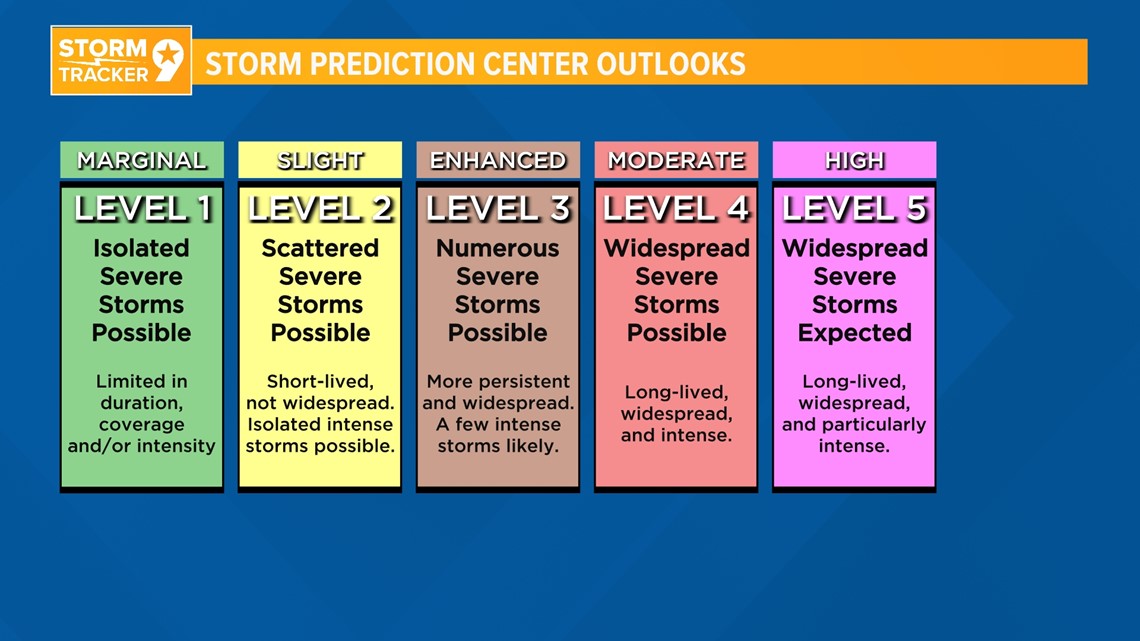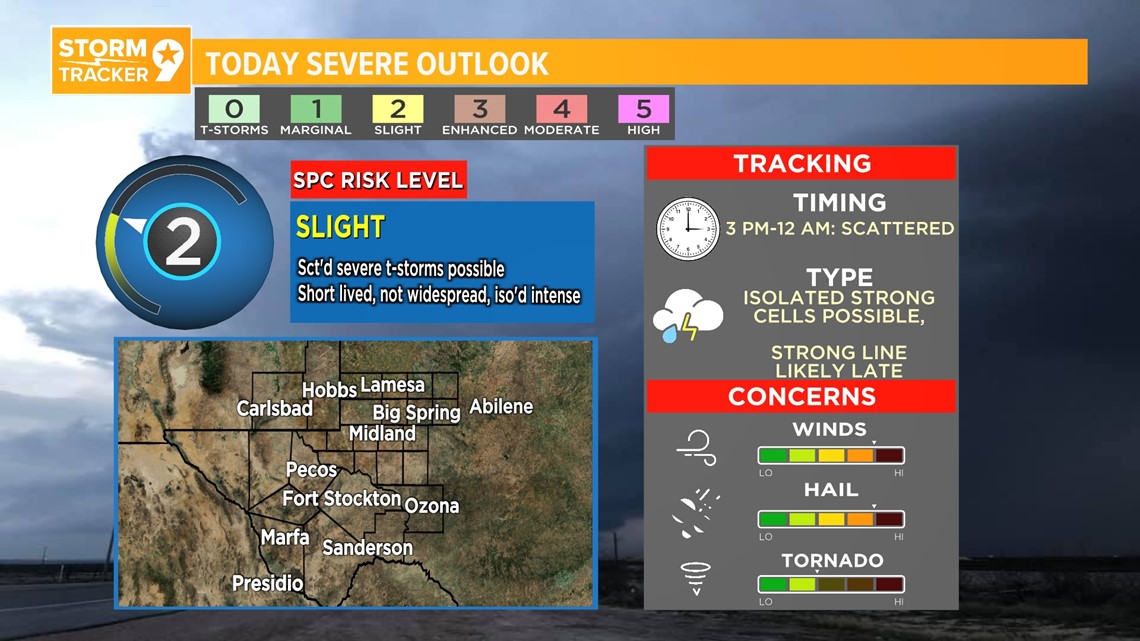NewsWest 9 wraps up severe weather preparedness week with a look at how we measure the level of severe weather we can expect during a forecast.
A special office with the National Weather Service is called the Storm Prediction Center, or the SPC. These people issue severe threat levels for the entire country over a three day period to warn them about large scale storm systems. These levels are ranked one through five and they typically corelate to how many and how long each individual severe storm is likely to last.
A level one Marginal will have isolated severe storms possible.
A level two Slight will have scattered severe storms possible.
A level three Enhanced will have numerous severe storms possible.
A level four Moderate will have widespread severe storms possible.
A level five High will have widespread destructive severe storms possible.


A better way to look at it will be to break down the categories into what type of weather is possible.
In West Texas, we typically only get as highs as a level two slight risk, but they can still cause problems.
A level one risk means winds of 40 to 60 miles per hour, hail up to one inch and a low tornado risk.
A level two risk means one to two tornadoes possible alongside strong winds and wind damage.
A level three risk means a few tornadoes are possible with several reports of wind damage.
A level four risk means strong tornadoes are possible with widespread wind damage and large hail.
A level five risk means a tornado outbreak with significant widespread damage.


While a level five High risk is extremely rare, we see a level one Marginal risk at least every few days. For example, central Oklahoma is under a one for Saturday. We could go off the main list to see what a level risk can do for that region, or we can break it down further with the information that the SPC releases for us.


For example, lets say there is a level two Slight risk in effect for the West Texas area. We can start off by seeing how frequent these storms can develop, the timing of the storm system, the type of storms and what main severe weather concerns are possible.
The SPC ranks them by risk factor within outlook under winds, hail and tornadoes. While all are possible, some will have higher probability than others. Just remember that these risk factors only go out about three days because the forecasts are prone to changing. One best way to stay informed is to tune in to NewsWest 9 and we will track those storms as they head in the direction of West Texas.



